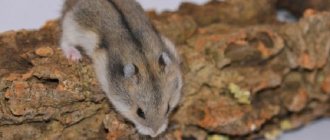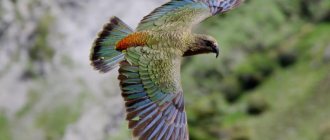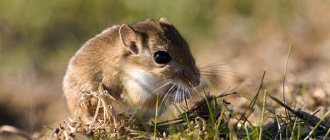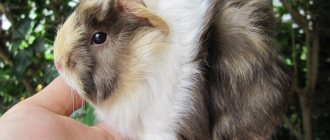The lynx is a member of the cat family, a solitary, secretive animal that inhabits the dense forests of Europe, Asia and North America. The animal is easily recognized by its black tufts on its ears and short tail.
Its keen eyesight gives this cat legendary status in the myths of many cultures. In Greek, Scandinavian and North American myths, the lynx sees what others do not, its role being to reveal hidden truths. As for the name of the animal, it most likely comes from the Greek word “leukos”, meaning “bright”. It turns out that the beast was named so because its eyes glowed in the dark.
Origin and description
Photo: Lynx
Lynxes are ancient animals. The evolution of their genus has been going on for more than 4 million years. Common lynx, also known as Eurasian lynx. descended from the common ancestor of the lynx genus - Issoire Lynx (Issoire lynx). This is a large mammal of the cat family. This cat has a unique appearance - its body is short, and its powerful legs are quite long.
Lynx belongs to the subfamily Felinae, which means Small cats. Their main feature is the hardening of the hyoid bone, which prevents the animal from growling loudly. But this cat can make subtle squealing sounds that are similar to the roar of a bear. Well, a lynx can purr and meow, like any cat.
How does it move?
The lynx is a fairly agile and hardy animal. She climbs trees well, climbs up mountain slopes, and can cover distances of up to 30-40 km per night in search of prey. Lynxes are one of the few cats that are not afraid of water and are excellent swimmers. During an attack, they are capable of jumping up to 4 m.
Another feature of the lynx is that when walking, its hind paws step into the tracks left by its front paws, while the animal does not move in a straight line, but in a winding snake.
Appearance and features
Photo: Animal lynx
The head of these cats has several characteristic features. On the sides there are so-called sideburns - elongated sections of fur. Another sign is the famous tassels on the ears. The lynx has powerful narrow jaws and a large wide nose. On the upper lip there are several rows of vibrissae, hard and long.
The lynx's muzzle itself is short. Her eyes are large, sand-colored, with round pupils. Her fur is simply excellent - soft, thick and very tall. In the belly area, the fur is especially long and white, with small specks. The color of the lynx varies from fawn-smoky to rusty-red. It all depends on the geographical area where it lives - the further south it is, the more red the lynx is.
Spotting can be more or less pronounced. As a rule, spots are concentrated on the back, sides and head of the cat. On the belly there are sparse spots, where the fur is almost always pure white. Shedding occurs twice a year. The lynx's summer coat is coarser and darker than its winter coat. The specks are much more clearly defined in summer. The tassels on the ears are always dark in color and are 4 cm long.
The lynx has excellent hearing, and this is not least due to its tassels. During a hunt, a cat is able to hear even the most fleeting sounds. For example, she can hear a brown hare crunching its branches from 100 meters away. Her vision is also well developed; a lynx can distinguish colors and even the degree of their brightness! But the cat’s sense of smell is rather weak, but if the trail is fresh, it will easily track the prey.
Economic value for humans: Positive
The Eurasian lynx was close to extinction due to heavy hunting for its fur in the early 1900s. Currently, commercial hunting is illegal in all countries except Russia. Eurasian lynxes are carefully protected in Afghanistan, where all hunting and trading is illegal. However, illegal fur trades occur in some countries.
Kinds
There are several types of lynx, below we will describe them in more detail.
Common lynx
The most common representative of this species, everything that we wrote above, is primarily swayed by the common lynx.
Canadian
Some zoologists consider it a subspecies of the common lynx. As the name suggests, this lynx lives mainly in Canada, but it can also be found in a number of northern US states (Idaho, Montana). It also differs from the ordinary lynx in being half the size; its body length is 48-56 cm. The fur of the Canadian lynx is grayish-brown in color.
Pyrenean
This type of lynx is found in the southwest of Spain, nowadays mainly only in the territory of the Coto Doñana National Park and is the rarest in nature. If the lynx as an entire species is listed in the Red Book, as it is endangered, then the Iberian lynx is currently one of the rarest mammals on planet Earth - according to zoologists, its population is currently only There are only about 100 individuals, and all measures must be taken to preserve the Iberian lynx in the future.
In appearance, the Iberian lynx differs from the usual one in that it has a lighter coat color and the presence of pronounced spots, which gives it a resemblance to a leopard.
Redhead
Living in the United States, the red lynx is distinguished by its red-brown color, with gray shades, and the presence of a white mark on the inside of the tip of the tail (other lynxes have black). It is also smaller in size compared to the common lynx; the weight of the red lynx is 6-11 kg. And what’s most interesting is that among red lynxes there are sometimes melanists, that is, representatives with a completely black color, which, like representatives of melanistic jaguars and melanistic leopards, are called panthers.
Dimensions
Adults grow in length from 80 to 130 cm, and the height at the withers reaches about 70 cm. An adult lynx, well-fed and well-formed, is similar in size and weight to a large dog. Vigorous, healthy males reach a weight of 18 to 25 kilograms, although some individuals gain weight in the range of 30 kilograms. Females are slightly smaller in size and weigh no more than 20 kg.
Features of color
The coat of these animals depends on their habitat and is represented by many options, including different colors. Therefore, there are species with a reddish-brown color, as well as types of pale-smoky tones, as well as their variants. In this case, a pattern may appear on the body in the form of spots on the back and paws, including on the sides of the predator.
The lynx's belly is covered with long and fairly soft hair, but not thick, distinguished by a white tint, with barely noticeable specks. Lynxes living in the southern regions are characterized by a red coloration, while they have relatively short and dense hair. Lynxes shed twice a year, both in spring and autumn.
Video
And in conclusion, we invite you to watch an interesting documentary about the lynx from the National Geographic channel - “Lynx - the Elusive Hunter.”
Author: Pavel Chaika, editor-in-chief of Poznavaika magazine
When writing the article, I tried to make it as interesting, useful and high-quality as possible. I would be grateful for any feedback and constructive criticism in the form of comments on the article. You can also write your wish/question/suggestion to my email [email protected] or Facebook, with respect, the author.
Author page
Behavior and lifestyle
This is a predator that leads a solitary lifestyle after dark. During the period of feeding and raising offspring, the female lives with her cubs for several months.
Interesting to know! At dusk, lynxes go hunting. Thanks to the “tassels” on their ears, lynxes are perfectly oriented in space and sense their potential prey.
Lynxes hunt their prey in various ways: they can sneak up unnoticed or wait for animals next to their paths, being in ambush. They also visit places where ungulates quench their thirst.
Why does the lynx have a short tail?
All representatives of felines use the tail for maneuvering and quickly changing the direction of running while pursuing prey. The lynx spends most of its time in the trees and prefers to hunt from ambush, so the tail does not play such an important role for it. On the contrary, a long tail would prevent the animal from quickly moving along branches and hiding in hollows. This is most likely why the lynx is the cat with the shortest tail.
SNOW LEOPARD
Where does it live?
Photo: Lynx cat
The lynx lives in rugged forests where there is a lot of prey. In sparse forests or bush thickets it is much less common. This cat is also found in mountains and cactus thickets. A lynx will never settle in open areas. In general, she tries to stay as far away as possible in the territories she inhabits.
The common lynx lives only in the Northern Hemisphere of the Earth. Its habitat extends almost throughout Scandinavia, Europe, to the east and north of Russia, and further to Central Asia.
Countries where the common lynx is found:
- Balkan Peninsula: Serbia, Macedonia, Albania;
- Germany;
- Carpathians: from the Czech Republic to Romania;
- Poland;
- Belarus;
- Ukraine;
- Russia;
- Scandinavia: Norway, Finland, Sweden;
- France;
- Switzerland;,
- Transcaucasia: Azerbaijan, Armenia, Georgia;
- Central Asia: China, Mongolia, Kazakhstan, Uzbekistan, Tajikistan, Kyrgyzstan;
- Baltics.
Among the entire family of cats, the common lynx is the most cold-resistant animal. It is found even beyond the Arctic Circle, in Scandinavia. Once upon a time this animal could be seen in any part of Europe. But by the middle of the 20th century it was almost completely exterminated in Central and Western Europe.
Today they are trying to restore the population of these cats, and very successfully. However, it is scarce everywhere. In Russia, 90% of lynxes live in Siberian coniferous forests, although they are found from the western borders of the country to Sakhalin itself.
What does it eat?
Photo: Common lynx
If there is a lot of food in the area, the lynx leads a sedentary lifestyle. Otherwise, she has to roam in search of food.
The basis of a lynx's diet usually consists of:
- white hares;
- grouse birds;
- small rodents (field mice);
- foxes;
- raccoon dogs;
- beavers;
- wild boars;
- moose;
- occasionally small ungulates: roe deer, musk deer, reindeer and sika deer;
- rarely domestic cats and dogs.
The lynx hunts, contrary to all ideas about it, not by jumping on its prey from a tree, but by lying in wait for it on the ground. Ambush is the cat's favorite hunting method. She also likes to secretly get as close to the victim as possible, and then rush at her with lightning speed, so to speak, to hide her. A lynx can hide behind stumps and trunks of fallen trees, and it attacks by making huge jumps, 4 m long.
It does not pursue its prey for long; as soon as it runs 60-80 m, the cat runs out of steam. But this is most often enough to catch a gaping animal. If the attack is unsuccessful, the angry lynx will make a couple of more jumps in pursuit and stop. Sometimes a predator kills small fur-bearing animals just for fun.
It strikes a large victim in the front part of the body, grabs the throat or neck with its claws, bringing excruciating pain to the animal. A wounded animal can carry a cat for some time until it becomes exhausted. The lynx does not eat much meat at one time; it hides the bulk of it in reserve.
Thus, a killed adult roe deer lasts for 4 days, a reindeer for almost two weeks, and a hare for only 2-3 days. Cats are not very good at hiding prey; they quickly cover it with snow and leaves. Therefore, small animals often take it away before the cat herself returns to feast on the remnants of the feast.
If you can’t have lunch in the forest...
When there is a lot of snow on the ground, the lynx can catch few of the forest animals, so it goes to houses where there are pets. She usually does this procedure late in the evening so that no one can see her, and steals sheep or goats.
Something he will definitely refuse
Scientists have studied well how and what the lynx eats, and what animals. She usually only consumes those victims whom she killed herself, and she does not recognize carrion. Even if she is very hungry, she is unlikely to touch the animal’s corpse.
Food in the taiga
Sometimes representatives of this feline species live in coniferous forests. What does a lynx eat in the taiga, in those forests where there are many dense trees?
In such areas the climate is very difficult, which is why the animals there have a hard time. Over time, of course, they adapt. The snow there is very deep, so in winter it is difficult for animals to move. But in the taiga there is a lot of food, both in summer and winter. However, in the cold, not all animals are able to get food for themselves. In the taiga, lynxes are not found in such large numbers, but they are still found.
They settle only in dark and remote places, where you can often find a hare and other animals, which is acceptable for a lynx. Many animals living in the taiga have poor vision, but lynxes have excellent vision. Thanks to this, cats easily hunt various birds that live in the taiga. There are also deer and roe deer, which the lynx eats with pleasure. This is what lynx eat in the taiga.
Nutrition
It will probably be unnecessary to say that the lynx is an incorrigible predator (like all cats), so its diet consists of various forest animals, most often hares. The lynx also hunts various small rodents, roe deer,
deer (but young ones; an adult deer, which also has powerful antlers, is not always easy to cope with), black grouse birds. Sometimes partridges, raccoons, hazel grouse and even foxes become its prey.
Natural enemies
Photo: Lynx in Russia
In addition to the man who has been exterminating the lynx for many years, it also has natural enemies.
First of all, these are all the other big cats:
- jaguars;
- cougars;
- Canadian lynxes.
In winter, especially in hungry years, a pack of wolves poses a significant danger to a lone cat. They surround their prey and mercilessly tear them to shreds. If a lynx meets a wolf one on one, it has every chance of defeating it, but against an entire pack it is powerless.
In a battle for prey, a lynx may be defeated by a tiger or snow leopard. They can fight with her for prey that the cat has already killed, and the lynx often flees in such situations. For the same reasons, wolverines are considered its enemy. The animals, although small, are very annoying to the cat; they are able to drive away a larger predator from their own prey.
But small lynx cubs can become prey for literally any predator that is larger than them. Not only foxes, wolves and other cats try to get into the family nest, but also bears. However, the female rarely leaves her kittens; she fiercely protects them from any uninvited guests.
Social structure and reproduction
Photo: Lynx kitten
Lynxes have a solitary lifestyle. However, at the end of February the rutting period begins, and all individuals begin to look for company. Usually silent cats begin to meow a lot, purr and squeal. During estrus, several males can follow the female at once. Which often provokes violent fights between them.
When the female chooses a mate, they begin to show each other signs of attention: when they meet, they “butt” their foreheads, sniff their noses. But the greatest manifestation of feelings is licking the fur of your partner. In the den, where the lynx cubs will soon appear, the bottom is carefully lined. To do this, the female uses bird feathers, ungulate hair and dry grass.
Pregnancy is short - only 60-70 days; the brood appears at the end of April - May. Usually 2-3 kittens are born, weighing 250-300 g. They are deaf and blind. All care for the offspring is the mother's business. She makes sure they are warm, cleans the bedding, licks and feeds the lynx cubs, and drives predators away from the nest.
Babies feed on mother's milk for two months, and after this period they begin to develop teeth. After this, they can already pat the meat that the mother brings, but milk still continues to play an important role in their diet. At three months, the babies leave the nest and go everywhere with the female.
Kittens at this time do not yet look exactly like their mother. Their fur is light brown, with a small number of specks. And they will only develop tassels and sideburns by the age of one and a half years. The family will be inseparable until the next rutting period. Then she herself will leave the lynxes, but they will still stick together for some time.
If pregnancy does not occur the next year, the female can live with the kittens this entire year until they become fully grown. Lynx reach sexual maturity at 1.5-2 years. The overall lifespan of a cat is about 15 years. In captivity they can live up to 25 years.
Population and status
On the territory of the Balkan Peninsula there are no more than a few dozen individuals, and in Germany, Switzerland and France at one time lynxes were completely exterminated, which required their repopulation.
The largest numbers of this predator are observed in the Carpathians and Poland. No less numerous populations are also characteristic of Belarus, Scandinavia, Central Asia, Latvia and Estonia. This representative of the cat family is also found in Siberia.
The common lynx is not of particular importance for commercial production, although the fur of this animal is highly valued. This is due to the fact that the lynx has thick, silky and long (up to 7 cm) fur, with a rather thick and warm undercoat. It should be noted that lynxes play a very important role in maintaining the balance of nature.
It is believed that the taste characteristics of lynx meat are quite high, since its taste characteristics are similar to veal. Despite this, in most countries lynx meat is not eaten, although it is quite tasty and tender.
Interesting to know! In ancient times in Rus', rich nobles were treated to lynx meat, and dishes prepared from the meat of this animal were always present on the tables of boyars and princes as an expensive delicacy.
A characteristic feature of European territory is the fact that even in the last century the number of lynxes did not exceed several hundred individuals.
In the territory of European countries, even in the last century, the number of common lynx decreased significantly and amounted to only a few hundred individuals. This became possible due to the fact that forests began to be actively destroyed, poaching began to flourish, and against this background the food supply was reduced. Nowadays, a lot of measures are being taken that are aimed at preserving the populations of this unique animal, as well as, if possible, increasing its numbers.
Nutritional quality
Lynx meat, like the meat of other predators, is not recommended for consumption. However, in Ancient Rus' it was considered a delicacy and served at princely feasts. Gourmets note the high nutritional qualities of lynx meat: its taste is quite delicate and resembles veal. In any case, the meat of a predatory animal is dangerous to consume without sufficient heat treatment, since it may be infected with helminths. Therefore, those who decide to enjoy this exotic product should take care of their safety and eat only proven meat.
Interesting Facts
- Since ancient times, the lynx was considered a sacred animal in Scandinavian mythology; it was depicted harnessed to the chariot of the goddess Freya.
- Maine Coon cats, which are essentially the largest cats in the world, according to some theories, trace their ancestry back to the lynx.
- The lynx also has its place in heraldry; the lynx depicted on various medieval coats of arms symbolizes visual acuity.
Sources
- https://wildfauna.ru/rys
- https://www.poznavayka.org/zoologiya/ryis-hishhnik-semeystva-koshachih/
- https://faunistics.com/rys/
- https://FB.ru/article/163012/chem-pitaetsya-ryis-v-lesu-chem-pitaetsya-ryis-v-tayge
[collapse]











